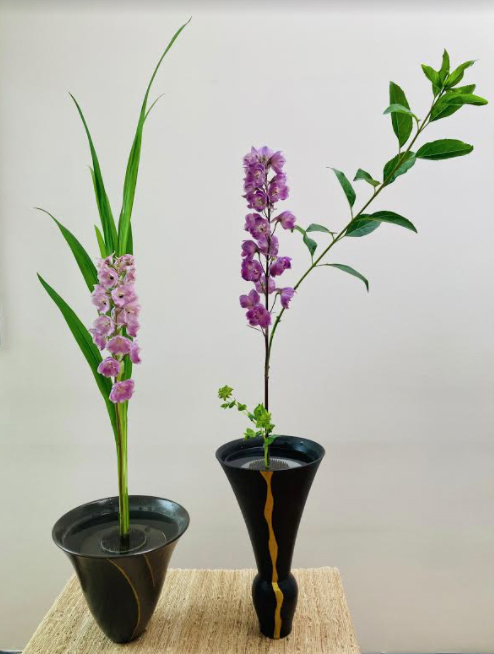Before I started to learn the Japanese art of flower arrangements called Ikebana, Crocosmia plants were nothing special to me. To me they looked just ordinary, rather tall leafy grass type growth, that one found in most gardens. Now, having practiced Ikebana for over fifteen years, I have developed some appreciation of lines of beauty in natural foliage that form essential part of the Ikebana composition. Specially the elegant leaves of Crocosmia have a big role in some Ikebana compositions.
Many of my friends with gardens used the ‘lock-down’ period last year to spend more time on their garden. A family friend in West London, who was re-organising her garden during the autumn last year, took out a large bunch of Crocosmia and offered some to me. By the time I rescued some of them, the leaves looked brownish and dehydrated and I thought they may not take root. The friend smiled encouragingly and said, “Don’t worry, they will grow by next year.” Trusting in her better gardening knowledge and I planted them in my small garden in Ealing and sure enough they have taken root. I feel so happy seeing the elegant long leaves dancing with delicate dark orange buds on slender stems.
Around the same time, I planted Forsythia saplings as well and by co-incidence were placed close to the Crocosmia. They too are now displaying vibrant fresh leaves on long stems. I cannot help but enjoy seeing both Forsythia and Crocosmia swaying in the gentle breeze, happy being together. This sight inspired me to make an Ikebana arrangement. I was eager to use them together to make two ‘Shoka Shimputai’, an Ikebana composition that is based on strict principles of lines of beauty inherent in plants and flowers.
I needed additional flowers for the arrangements so I chose some Delphinium form my local supermarket in Ealing because I like the towering stem with a head of pale pink blossom. Below is a photograph of the Ikebana arrangements: ‘being together’!

